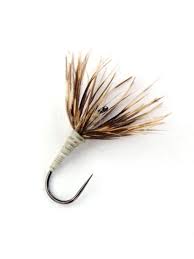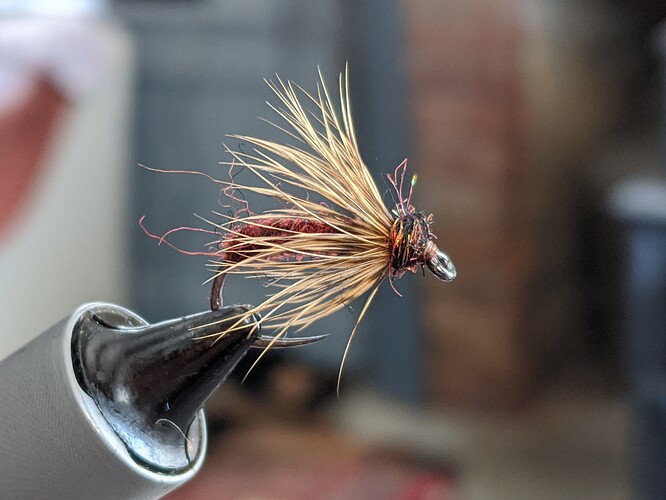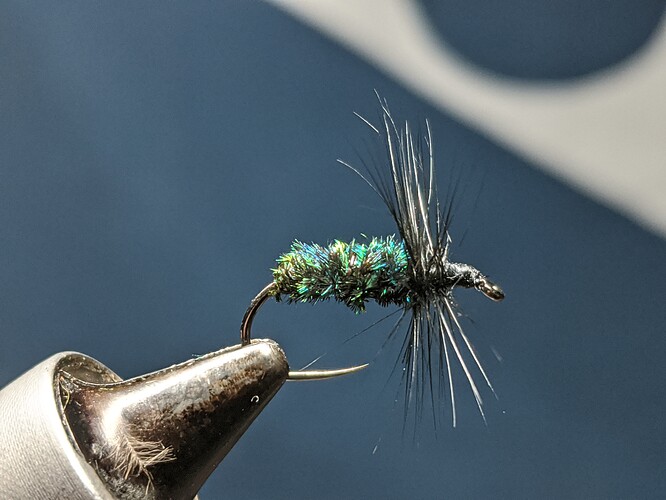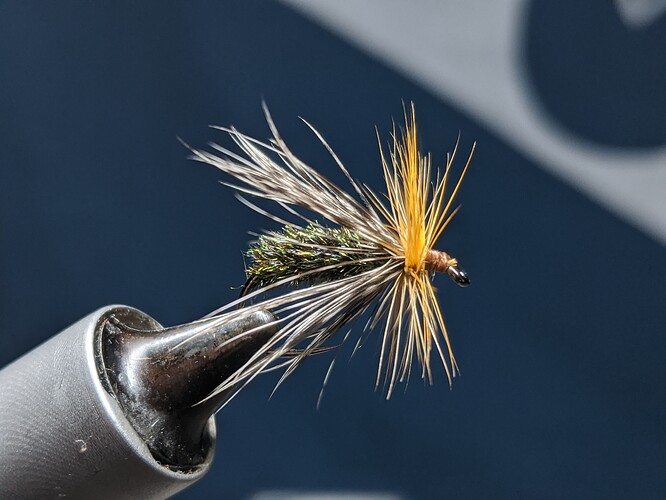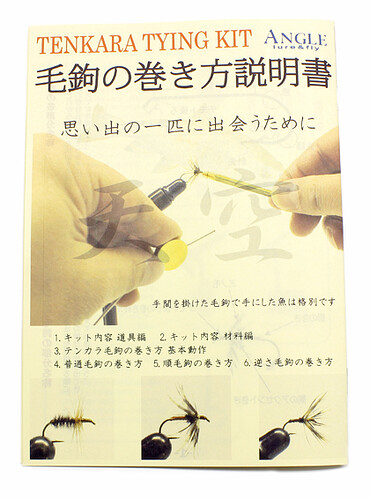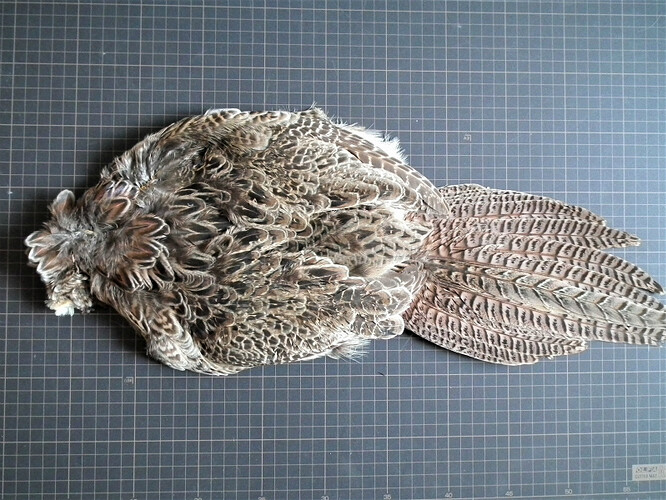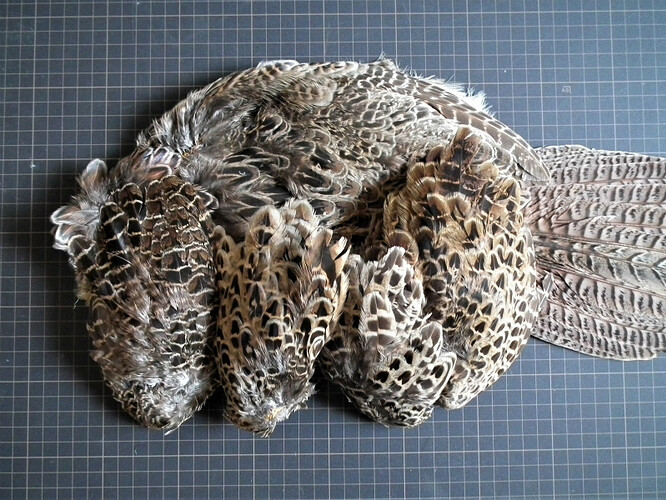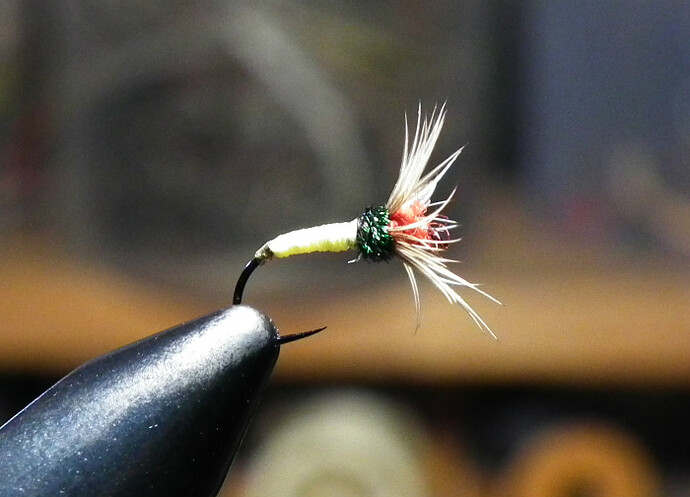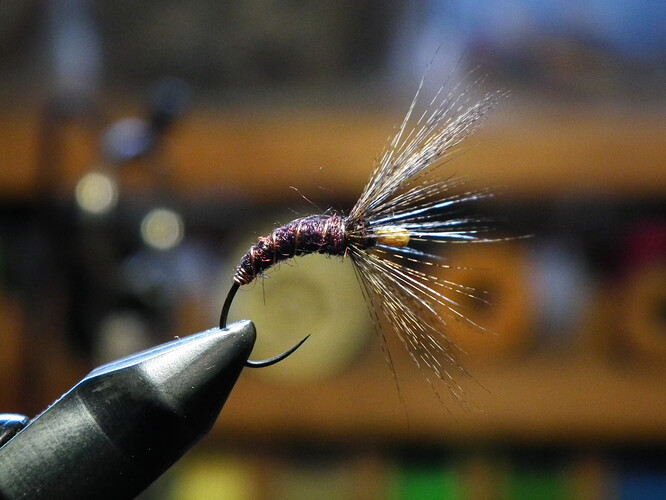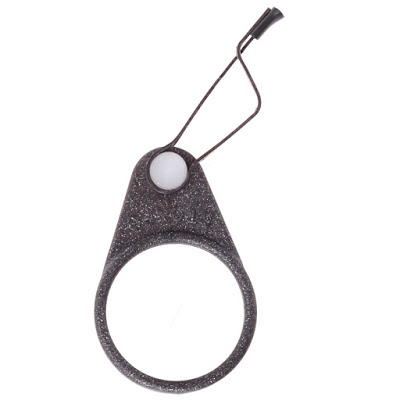Jason, in numerous places, from different people, I have heard this thumb rule.
When fishing fast water use kebari with thicker hackle. When fishing slow water or streams with a lot of of fishing pressure use kebari with thinner or sparser hackle. I think your thin hackle tenkara flies will work fine in the right conditions.
Since Discover Tenkara information has been referenced already. I recall seeing more than once, Paul Gaskell mentioning when fishing with Dr Ishigaki, and maybe some other Japanese tenkara anglers, seeing then chewing off or snipping off some of the hackle, to make it thinner, as they moved into fishing slower water sections of a stream or sections of stream with heavier fishing pressure, where fish have so many flies tossed at them, a more ratty looking thinner hackle fly might be more attractive to the fish and less likely to spook them.
I guess one could say, if you tie all flies with thick hackle it’s easy to make the hackle thinner when you think it might be more attractive to fish, but you can not add hackle to a fly on the stream.
If you are not familiar with Yoshikazu Fujioka-san’s kebari studies, you might find them helpful.
He divides kebari into 6 basic types.
With the 5th category, stiff/short/normal hackle accounting for 38.5% of all fundamental kebari types. With the second most popular being the 1st category; soft/long/normal hackle accounting for 17.4%, about half as popular or commonly found in his survey vs category 5.
However, there is no accounting for which type catches the most fish.  Who knows maybe the 5th category only catches the most tenkara anglers.
Who knows maybe the 5th category only catches the most tenkara anglers. 
Though perhaps it isn’t a rigorous scientific survey of kebari types used in different areas of Japan, it is clearly a survey he has spend years making, So pretty valid for distribution or popularity of soft or stiff hackle, short or long hackle. Reverse or normal hackle.
He seems to not make a distinction between jun or futsū hackle orientation, { and it seems fairly common in Japan to not make much distinction between jun or futsū kebari, using the names interchangeably} calling both ‘normal’ as contrasted with and distinct from sakasa (reverse, forward facing hackle)
http://www.hi-ho.ne.jp/amago/b-streams/flytying/kebari_study.html
http://www.hi-ho.ne.jp/amago/b-streams/flytying/pdf/Kebari_Pattern-E.pdf
You may notice on the second page of the pdf document the table and the polar graphs show the highest number of kebari, by a large margin, have - short, stiff, normal hackle. iow not long soft sakasa kebari.
And on the first page of the pdf document you will see in the kebari sketches, under the short stiff hackle column on the right side - the Futsū-kebari and Sakasa-kebari, are both tied with neck hackle. The Jun-kebari uses an alula feather, the so-called ken-bane (sword feather) that was recently posted in a different forum thread.
You might find the following web page interesting - a webpage I just happened to be looking at last evening. To understand the different kebari hackle types & names used by the Japanese. Futsū kebari, jun kebari, & sakasa kebari. Though I must admit, the author’s examples are all of the long, soft hackle type, but they could be tied with short, stiff hackle too. Scroll down the page about 40% down from the top to see pictures of the 3 types of kebari.
https://fishing-days.com/trout-tenkara-fishing-howto
Top to bottom:
Futsū kebari , 普通毛鉤, Ordinary kebari, hackle ~ right angle to hook shank
Jun kebari, 順毛鉤, Normal kebari, - hackle angles toward hook bend
Sakasa kebari, 逆さ毛鉤, Hackle is angled, reverse or inverted from hackle angle of Normal, Jun kebari. Hackle faces forward toward hook eye.
Lastly, front cover of a kebari tying instruction booklet sold in an Angle tying kit.
Left to right : Futsū , Jun, Sakasa kebari. The hackle is pretty thin in their example kebari - with only the Jun kebari having thicker hackle.
Anyway, I’d tie with the feathers you have. If you want thicker, with experience you can do more wraps and keep the wraps close together, not spreading to far over the hook shank. Or to tie kebari to match your example picture, find some pheasant feathers.
Doh, here’s a video someone uploaded to YT about a month ago, Feb 4, 2020, comparing all 3 hackle types. Twitching them underwater in the order listed.
テンカラ釣りで使う「逆さ毛鉤」「普通毛鉤」「順毛鉤」の比較【水中映像】
Use for Tenkara fishing comparison of “Sakasa kebari”, "Futsū kebari " and “Jun kebari” [Underwater video]
Opening picture
Bottom left Sakasa kebari - 逆さ毛鉤
Top right Futsū kebari - 普通毛鉤
Bottom right Jun kebari - 順毛鉤
